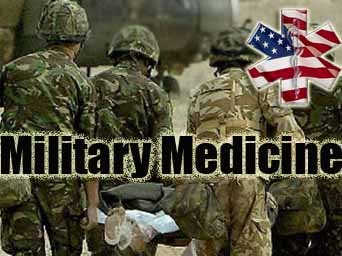 By Jim Garamone
By Jim Garamone
American Forces Press Service
WASHINGTON, Oct. 25, 2011 – Military medicine is seeking additional ways to help patients manage their pain instead of just prescribing powerful drugs, the chief of staff of the Army’s pain management task force said here today.
Col. Kevin Galloway told the Defense Writers Group that the military had to start looking at pain comprehensively.
“We were always asked how pain related to soldier suicides, to drug abuse, and so on,” said Galloway — a registered nurse. “As we looked at our strategy in Army medicine, very honestly, we didn’t think it was as comprehensive as it should have been.
Combat becomes a catalyst for medical innovation, the colonel said. “It has to,” he added. The military combated yellow fever, malaria and other infectious diseases, he noted, and pioneered use of antibiotics on a grand scale, as well as the use of blood products and plasma.
Getting casualties from battlefield to the hospital and triaging casualties was an outgrowth of military medicine, Galloway said, and medevac procedures and aeromedical evacuation once belonged exclusively to the military medical realm.
But in pain management, the progress has not been as far or fast as military leaders wish. Galloway told the story of Confederate Lt. Gen. Thomas “Stonewall” Jackson at the Battle of Chancellorsville in 1863. Jackson was grievously wounded in a friendly fire incident.
How he was handled was the state of the art for the time. He was evacuated in an ambulance and was first treated at what today’s soldiers’ would call a battalion aid station. In addition to a shot of whiskey, doctors gave him morphine. Jackson called the relief of pain from the wound “an infinite blessing.”
Jackson’s initial treatment to ease his pain was a good-news story. The final result was not so good: Jackson later died of pneumonia.
Flash forward to 2001, and the bulk of the pain-relief arsenal was not a lot different. “It was still based around opiates,” Galloway said.
Medicine’s goal was “to knock that pain down to zero,” the colonel said. “And we can do that.” But families began to complain.
“When the kids leave for school in the morning, Dad’s on the couch. The pain is controlled,” Galloway said. “Victory for us and medicine — we did a good job. But when the kids come home from school in the afternoon, Dad’s still on the couch.
“Medicine is still saying it’s doing its job because the pain is controlled, but this person’s quality of life is probably not what they want it to be, definitely not what the spouse wants it to be, [and] not what their family wants it to be,” he added.
The goal shouldn’t be to knock the patient out, but to maximize function, Galloway said.
The task force developed recommendations that led to a comprehensive pain-management strategy. The strategy uses both traditional and nontraditional pain-treatment options. Treatment with drugs is appropriate in many cases, Galloway said, but so is treatment with acupuncture, biofeedback or massage.
“The Army for the past year has been embarked on operationalizing … an ambitious, comprehensive, soup-to-nuts recalibration of how we look at pain, how we treat pain, how we resource pain in our organization, and being part of the DOD collaborative effort on this, to change the way it’s done in the military health system,” he said.
The military is uniquely poised to make changes in a way that those on the outside can see and relate to, he said.
The task force had three overarching findings from the task force, the colonel said.
“The first is we meet current standards of care,” he said. “We weren’t lacking, but we weren’t happy with what was going on.”
The second finding is that best practices occurred in Defense and Veterans Affairs organizations, “but they were being implemented and existing in isolation,” Galloway said. “They weren’t being replicated.”
The third, he said, is unwarranted variability. “We didn’t have a common orientation across our organizations,” he explained. “When you talk pain — sometimes between shifts in a facility, there were differences.”
Galloway said the military is looking to change the culture toward treatment of pain. It will take time, he acknowledged, adding that officials will continue to look for new ways, techniques and procedures. They also will institutionalize best practices across DOD and VA, he said.
“Years from now,” Galloway said, “they will look back and say what medical benefit came from these wars and it will be this strategy on pain that is the breakthrough.”
ATTENTION READERS
We See The World From All Sides and Want YOU To Be Fully InformedIn fact, intentional disinformation is a disgraceful scourge in media today. So to assuage any possible errant incorrect information posted herein, we strongly encourage you to seek corroboration from other non-VT sources before forming an educated opinion.
About VT - Policies & Disclosures - Comment Policy



